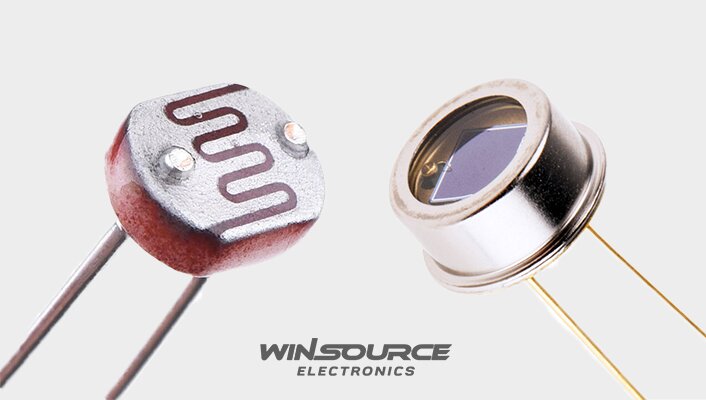
In the realm of light sensing applications, two primary components often take the spotlight: photodiodes and photoresistors. These devices play pivotal roles in converting light energy into electrical signals, enabling a myriad of applications ranging from ambient light sensing in consumer electronics to industrial automation and beyond. In this article, we delve into the characteristics of photodiodes and photoresistors, comparing their sensitivity, response time, and spectral response to shed light on their respective strengths and applications.
Table of Contents
TogglePhotodiodes
Photodiodes are semiconductor devices that generate a photocurrent when exposed to light. They operate based on the principle of the photoelectric effect, wherein incident photons liberate electron-hole pairs within the semiconductor material, leading to the generation of a current. Key characteristics of photodiodes include:
- Sensitivity: Photodiodes exhibit high sensitivity to light, making them ideal for applications requiring precise light detection, such as optical communication systems and photovoltaic cells.
- Response Time: Photodiodes typically offer rapid response times, enabling quick detection of changes in light intensity. This feature is particularly advantageous in applications where real-time responsiveness is critical, such as laser range finding and high-speed photometry.
- Spectral Response: Photodiodes exhibit a broad spectral response, spanning from ultraviolet (UV) to near-infrared (NIR) wavelengths. This versatility allows for their use across a wide range of applications, including spectroscopy, flame detection, and environmental monitoring.
Photoresistors
Photoresistors, also known as light-dependent resistors (LDRs) or photocells, are passive components whose resistance varies in response to incident light. They consist of a semiconductor material whose conductivity changes with light intensity. Key characteristics of photoresistors include:
- Sensitivity: While photoresistors offer reasonable sensitivity to light, they generally exhibit lower sensitivity compared to photodiodes. As a result, they are commonly used in applications where moderate light detection is sufficient, such as street lighting control and camera exposure control.
- Response Time: Photoresistors typically have slower response times compared to photodiodes. The resistance change in photoresistors occurs gradually as the light intensity changes, leading to a delayed response in applications requiring rapid detection.
- Spectral Response: The spectral response of photoresistors is often narrower compared to photodiodes, with peak sensitivity in the visible light range. While this limits their suitability for certain applications requiring detection across a broad spectrum, such as spectroscopy, photoresistors are well-suited for tasks specific to visible light sensing, including ambient light detection in consumer electronics and automatic lighting systems.
Choosing the Right Component
When selecting between photodiodes and photoresistors for a light sensing application, several factors must be considered:
- Sensitivity Requirements: If high sensitivity and precision are paramount, photodiodes are the preferred choice. For applications where moderate sensitivity suffices, photoresistors may be suitable.
- Response Time: Applications necessitating rapid response and real-time monitoring favor photodiodes due to their faster response times. Conversely, applications tolerant of slower response times may opt for photoresistors.
- Spectral Requirements: Consider the spectral characteristics of the application’s light source and choose the component with a spectral response that aligns with the desired detection range.
In conclusion
Both photodiodes and photoresistors play essential roles in light sensing applications, each offering distinct advantages depending on the specific requirements of the application. By understanding their characteristics regarding sensitivity, response time, and spectral response, designers can make informed decisions to achieve optimal performance in their light sensing systems. Whether it’s the precision of a photodiode or the simplicity of a photoresistor, these components illuminate the path to innovative solutions across diverse fields of technology and industry. Looking for Photodiodes and Photoresistors? Take a look here WIN SOURCE!

COMMENTS